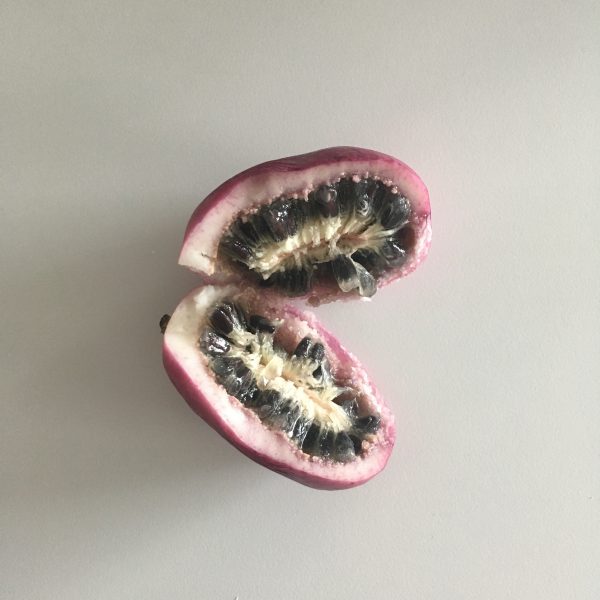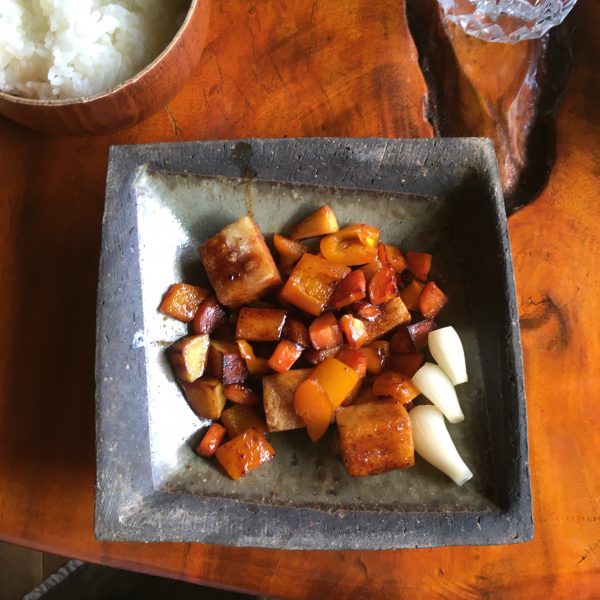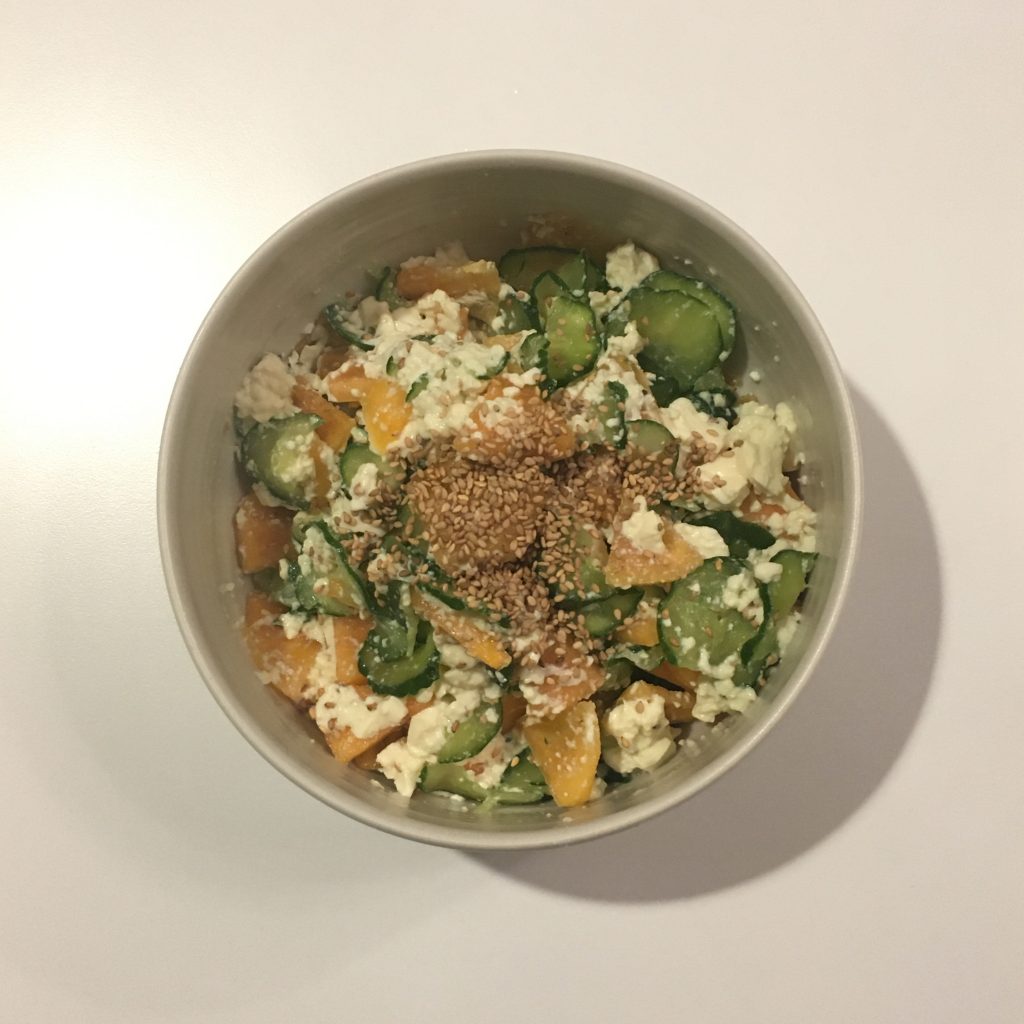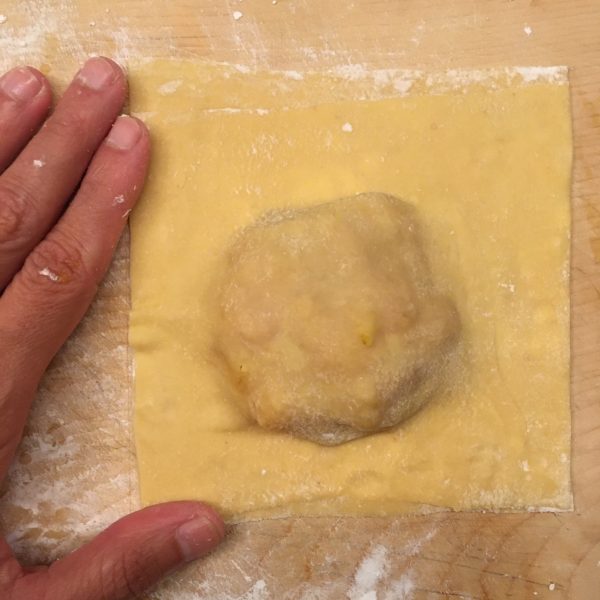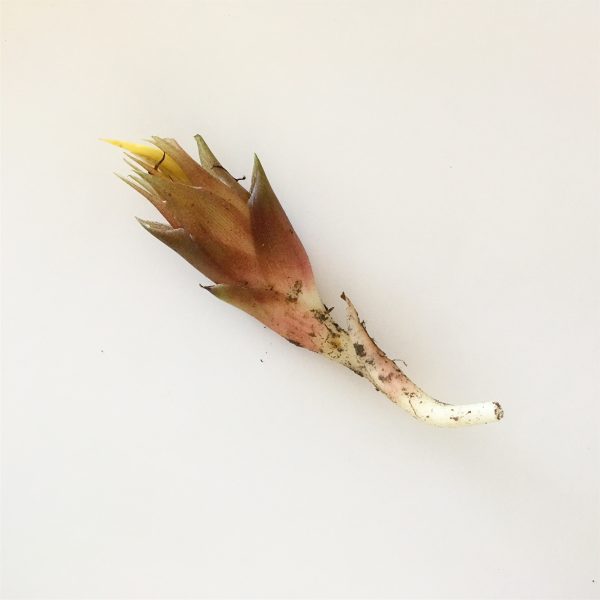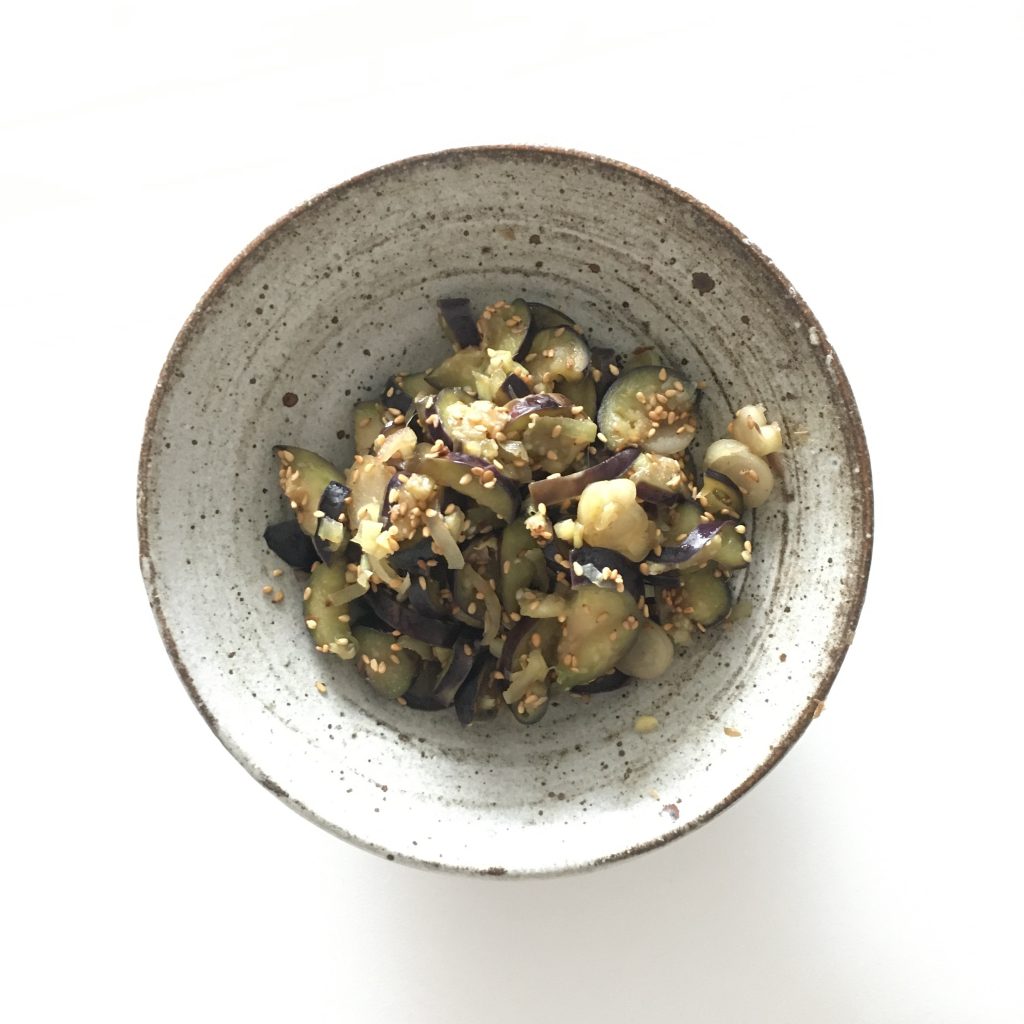Every day brings surprises, those you’ve worked hard for, those you were dreaming of and those that the cherry on the top, but also its share of disappointments. For example, after almost 3 years since our stray cat Holly disappeared and the little Ephy very brief passage, what a surprise to see that stray cats are back and we have three coming now. They are very shy and still scared of us, but one now arrives when hearing us parking home for the weekend and waits to be fed… It took us 6 months to be able to approach and touch Pablo, so I am expecting not less for these ones too… though Pablo was more interested by company than food… time will tell us…
Other surprises are often in the small things of daily routine… and when the other day at a local products store I found a fruit I never saw before but knew about and immediately identified; akebi あけび, chocolate vine. I couldn’t help remembering Little Forest when they put so much efforts in trying to harvest akebi and then delightfully eat them (watch here!!)… so I grabbed the bag of fruits and went to the cashier, and back to A. who was waiting outside, so proud of my finding!!!
It was the first time ever to see akebi for real, so I did my homework and studied how to eat it and possibly cook it. I also searched a bit why it is bot so common in Chiba… then opened the first fruit. the skin was not too thick and the inside less white than I imagined it would. And the first fruit was really tedious to eat, so tedious that A. said he would not eat a second akebi in his life ever!!!!! I persisted and became more fluent at eating them, but the promised sweetness etc… was definitely not here. So over all it is a huge disappointing experience.
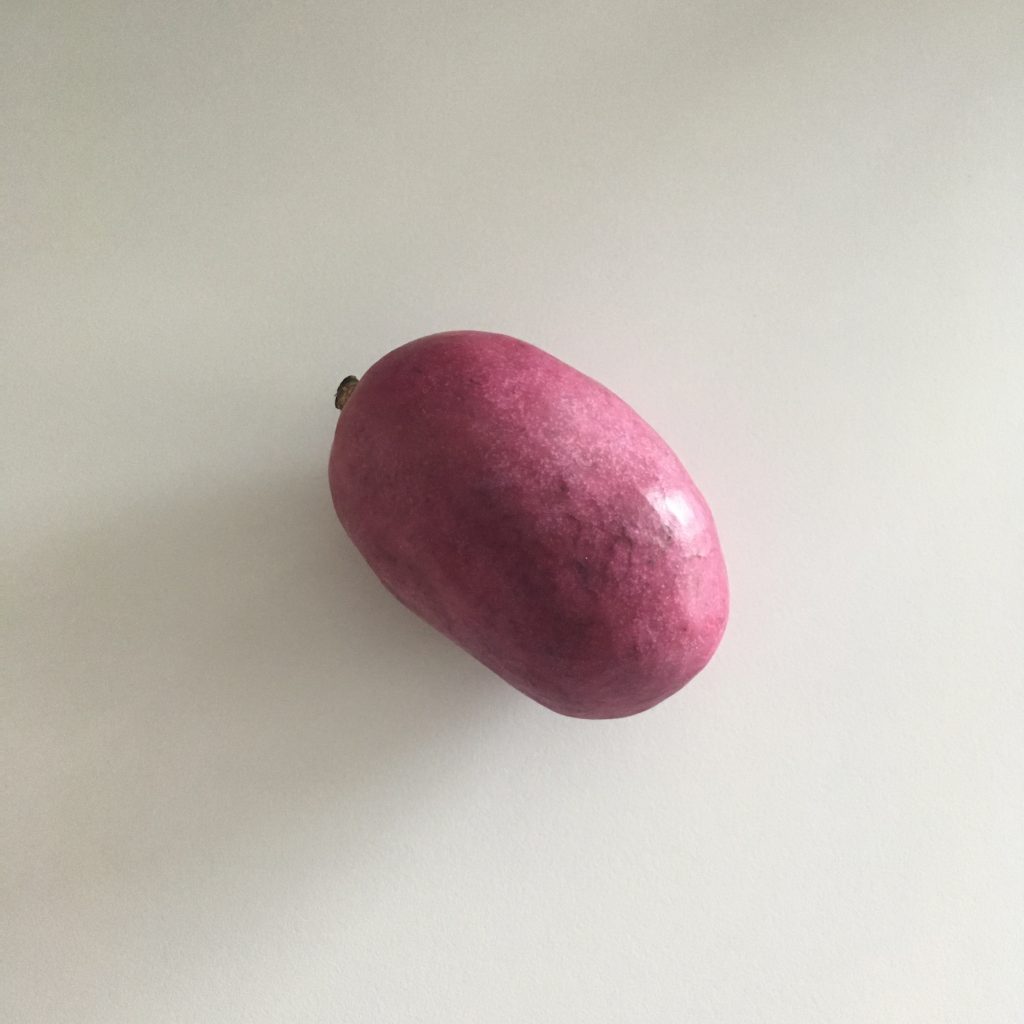
Recipe book also said that the skin is good in tempura, but looking at the one of my fruits, I lost confidence and decided I wouldn’t try further…
So overall, akebi is a beautiful fruit, but not as delicious I expected it would be, so either the fruits from Chiba are very much less good than those from Yamagata, or Someone is lying about akebi deliciousness!!!
In any case have a very good weekend!!!!
